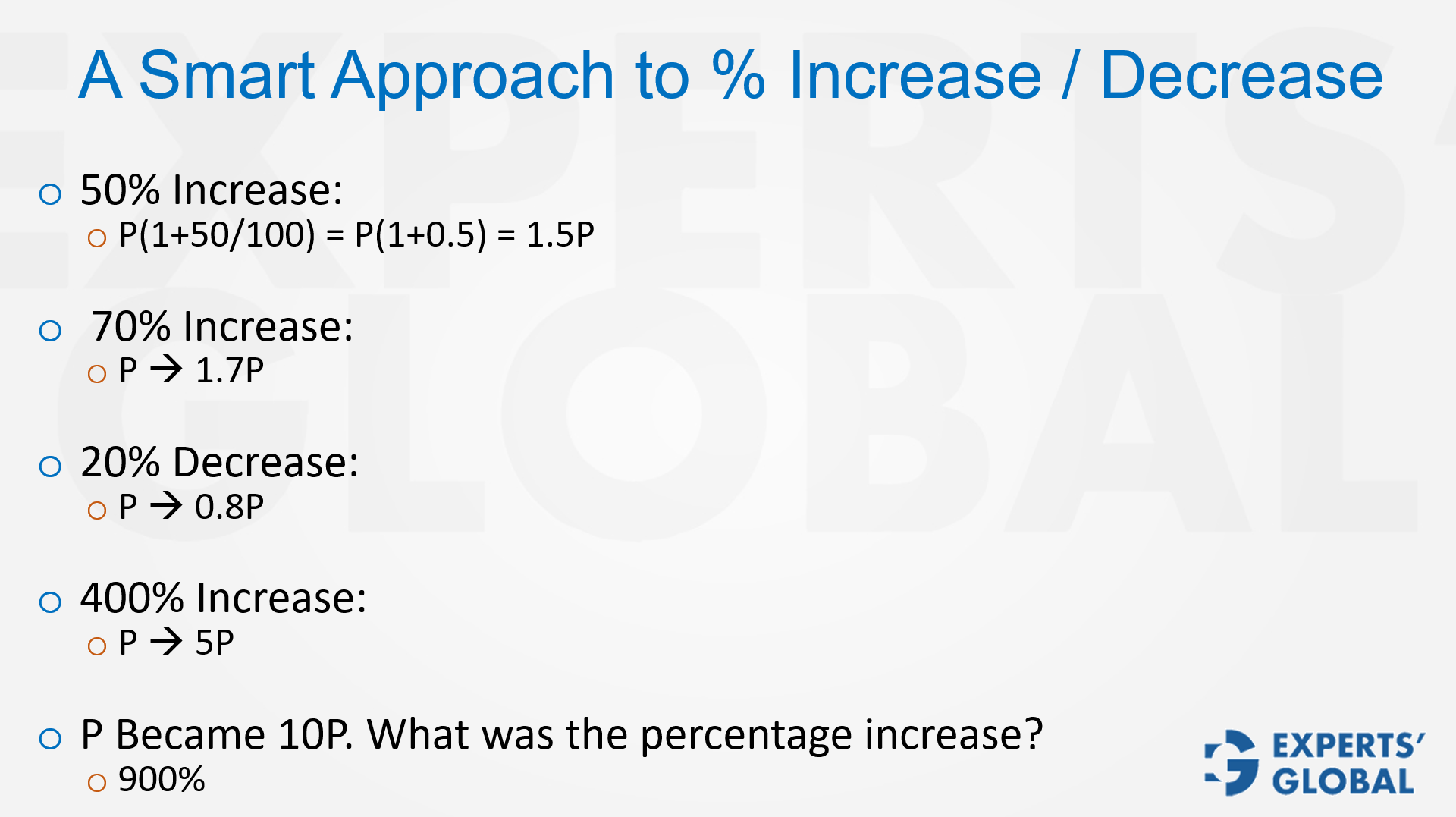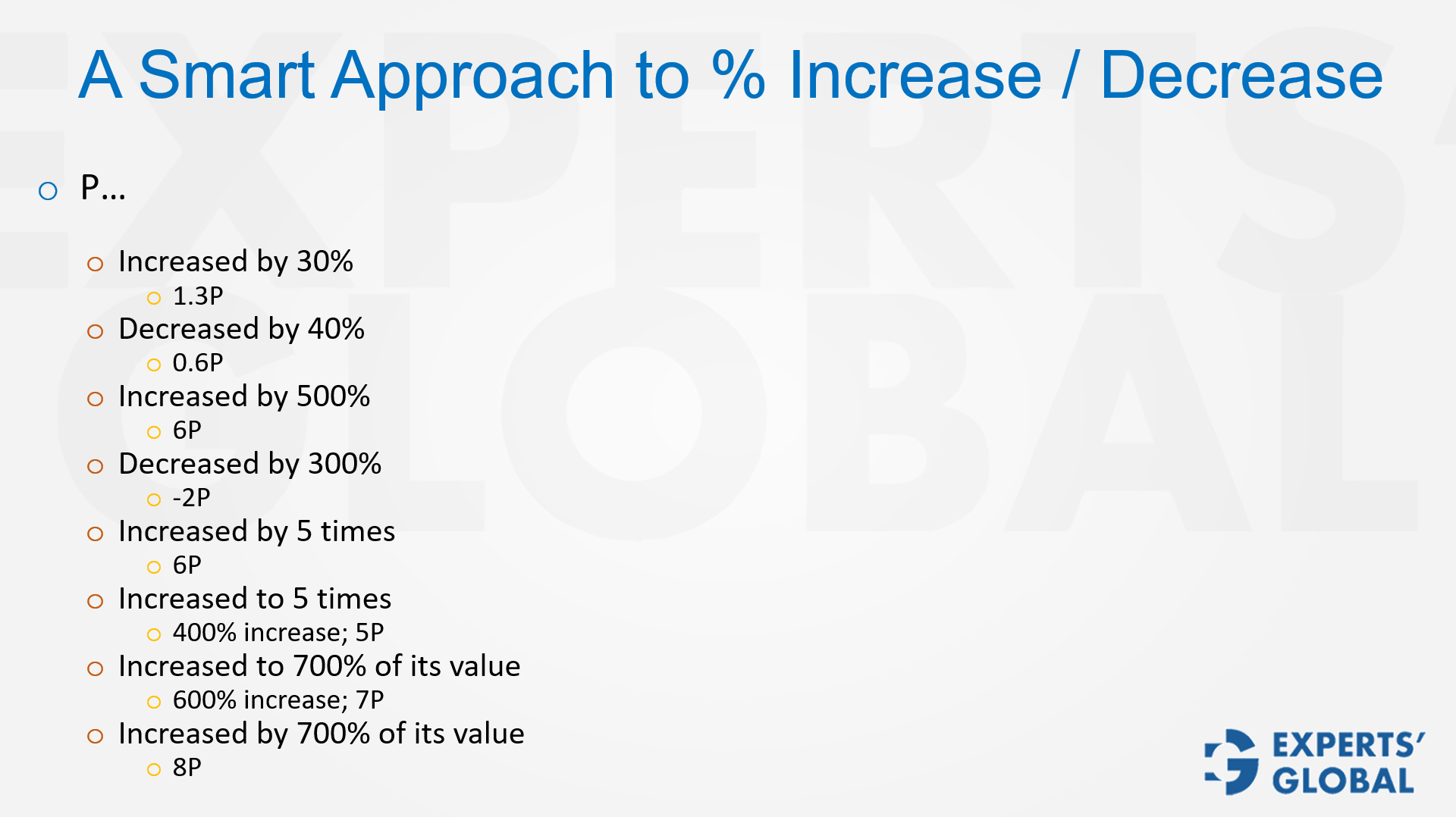Invest 30 seconds...
...for what may lead to a life altering association!
Help Line
- +91.8800.2828.00 (IND)
- 1030-1830 Hrs IST, Mon-Sat
- support@expertsglobal.com
...for what may lead to a life altering association!


Handle GMAT percentage change with factors; for example: 50% increase is 1.5 times; 20% decrease is 0.8 times. Read wording carefully: increase by versus increase to; ‘increased by five times’ becomes 6P; ‘increased to five times becomes 5P.
Percentage problems look simple at first glance, but many students lose marks because of small mistakes in interpretation. A percentage increase or decrease can be solved in seconds if you use a direct approach instead of expanding into lengthy calculations. For example, a 50% increase does not need fractions or complicated calculation. It simply means the original value becomes one and a half times itself. A 20% decrease means the value becomes 0.8 times the original. Once you see this pattern, the topic transforms from confusing to intuitive. What also matters is the clarity between “increase by” and “increase to,” which students often mix up under exam pressure. You must train yourself to read the language carefully and translate it into multiplication directly. Practice these with GMAT preparation drills and reinforce the habit through GMAT practice tests, and you will never stumble on such problems again.

When a number changes by a percentage, the easiest method is to multiply the original by a simple factor. A 30% increase means multiplying by 1.3. A 60% increase means multiplying by 1.6. A 40% decrease means multiplying by 0.6. This saves you from unnecessary intermediate steps.

One frequent mistake is confusing the increment with the new value. For instance, a 400% increase is not 4P, it is P + 4P, or 5P. If a number becomes 10 times its value, the increase is not 1000% but 900%. Such precision is critical on the GMAT.
The phrasing can change everything. Increased by 5 times means P becomes 6P, a 500% increase. Increased to 5 times means P becomes 5P, a 400% increase. Similarly, increased to 700% of its value means P becoming 7P, while increased by 700% means P becoming 8P.

Every problem reduces to multiplying the original value by a factor that represents the new total. With practice, this becomes second nature. If you strengthen this approach through GMAT simulation, you will solve percentage questions with speed and certainty, avoiding the traps that catch most test takers.
Percent change is a quiet lesson in perspective. Before rushing, name the base, then let the factor speak. Increase by differs from increase to, just as intention differs from outcome. When you breathe, write, and multiply, the noise clears. This habit strengthens judgment beyond the test. It steadies choices in MBA Admissions, budgets, and goals. You learn to measure change before reacting to it. You learn to compare fairly. Keep a small notebook of patterns, revisit them, and trust the calm, repeatable sequence. Precision is kindness to your future self. Clarity grows from simple steps taken carefully, again and again.